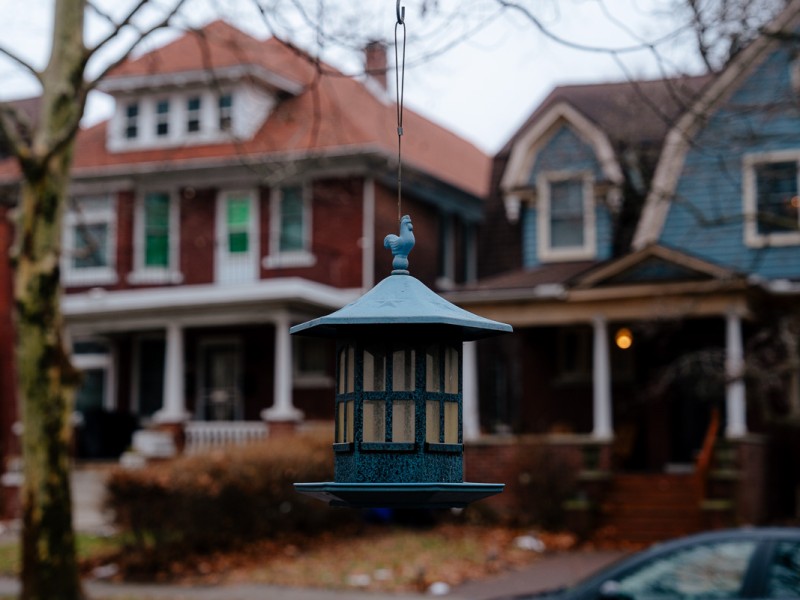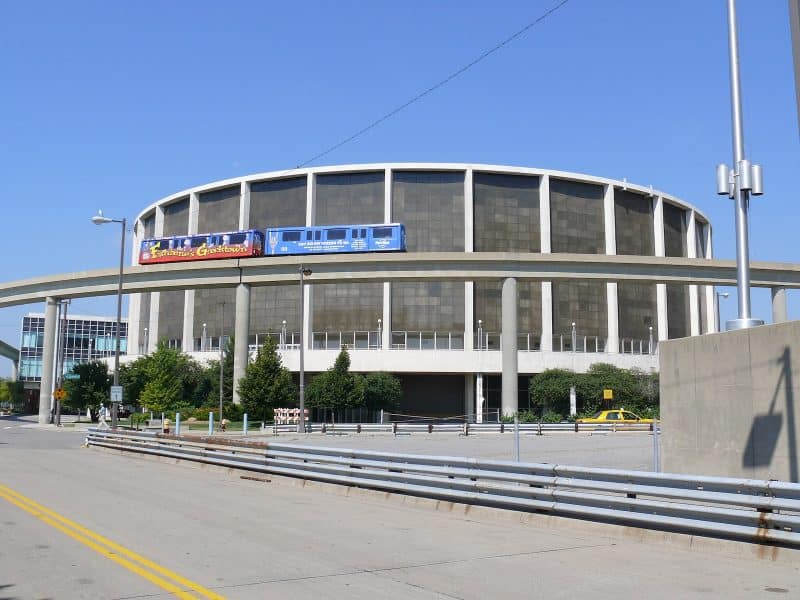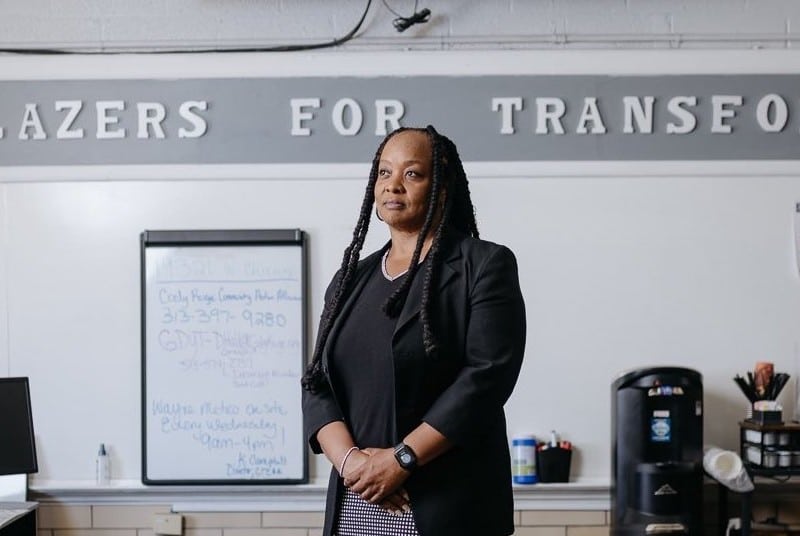Detroit’s chief storyteller: Why the stories of everyday Detroiters matter
The city of Detroit recently created the position of chief storyteller—perhaps the first of its kind in the nation. In a column for Model D, new hire and veteran journalist Aaron Foley writes about his hopes for the job.

The other day, my friend and I were driving through his parents’ neighborhood in Bagley when we noticed a giant wooden squirrel carved from a tree trunk in someone’s backyard.
“Well, that’s interesting,” I thought. “Kind of like the Lorax House in Woodbridge.”
The fact that the Lorax House came to mind first is why I’ve been asked to do what I’m doing now for the city of Detroit.
There’s a good chance you’ve heard about the Lorax House. You didn’t know other people had massive carvings in their backyard. There’s a reason why, and it’s because of the hyper-focus on the trendier parts of town in all mediums. If an apartment in Woodbridge comes up for rent, it’s posted everywhere. When people unfamiliar with Detroit ask where to move in Detroit, the answer is typically Woodbridge. Or Corktown. Or Midtown. Or downtown.
Never mind the fact that Bagley, where that giant squirrel is, is chock full of rentals.
After working in journalism for a decade, most recently as the editor of BLAC Magazine, I’m now working in the mayor’s office as chief storyteller. To be clear, this is not a communications or press secretary role. It’s something entirely different—something we believe hasn’t been done in any major city before. And what I’m trying to do is make sure all neighborhoods have equity in coverage, particularly those outside the 7.2.
Essentially, we’ll be creating a content site that finds more giant wooden squirrels in people’s backyards, and tells you the stories behind them. (I’m wary of calling it news, for the simple fact that journalists produce news, but journalists are not embedded within city government.)
And not just giant squirrels. Stories of the essential work of block clubs, the history behind historic homes, unsung business owners, and church anniversaries.
And not just that. Let’s also talk about how demographic changes are reshaping communities citywide. How a neighborhood organization can be proactive in stirring change for their members. How to make sure residents are included in development plans. How to use city data to tell—or perhaps predict—stories from the neighborhoods.
I envision the content as a cross between your suburban community newspaper with the kind of feature writing seen in magazines.
Since starting this role in March, I’ve gotten some skeptical questions about how I intend to pull this off. Is it just going to be regurgitations of city initiatives? Is it all positive, cheerleader fluff? Is Duggan going to be handing down orders of what he wants to see written? Is it government propaganda?
No, no, no, and no. We’ll be enterprising stories from off the ground, with the goal of amplifying things we don’t always hear about.
I’m as skeptical of the pervasive narrative of the city, and as big a booster for the neighborhoods, as anyone. After 15 years—it started with the 2002 release of the film “8 Mile”—of telling people outside of Detroit what Detroit is really like, I’ve compiled a mental bank of scripts written for specific people who talk about Detroit with their own assumptions in mind.
I know which neighborhoods—and not just your typical ones—to suggest when someone asks where to live in Detroit. I know which commercial corridors to rattle off when someone says there’s no retail or restaurants outside of downtown. I have my list of nonprofits, service organizations, and community groups to read from when someone asks who’s doing what kind of work not funded by foundations. If someone talks about that one restaurant that gets the lion’s share of media attention, I push them in the direction of three more they’ve never heard of.
To be honest, it’s become laborious and sometimes numbing. The biggest challenge has been trying to paint a full picture of Detroit, scars and all, in short time constraints. Like during panel discussions where you have to share the mic with a few others and only have a sum total of 15 minutes of discussion. Or during interviews where you have to boil an entire city down to a soundbite or two.
It’s just impossible to cram a 300-year-old, 138-square-mile city into a box.
Some people get it, and are willing to be open-minded when it comes to learning more about the city. But what we’re up against now is the fact that news about things going on outside downtown developments isn’t traveling as fast as the folks who stand to benefit from those developments would like, both locally and nationally. The city’s announcement of inclusionary development in Fitzgerald probably won’t make the cover of Time magazine.
I know this because I was recently asked to speak at a symposium at the Massachusetts Institute of Technology to a crowd primarily consisting of Detroit-to-Boston expats and urbanists curious about the city. I was astounded by the number of people in the room still stuck on now-antiquated ideas that a home in Indian Village could be had for as little as $1,000. Everything about Detroit is getting lost in translation.
We’re trying to build a platform—which is coming very soon—where things about the city are not only easy to understand, but expressed in a way that will make you want to learn more. I want to finally debunk some of the myths that have been clouding the city for years. I firmly believe that the value of a city is measured by the character of its residents, and Detroiters are worth more than pure gold.
Here’s our chance to let them shine.
Aaron Foley is chief storyteller for the city of Detroit. Got a story in your neighborhood that deserves more attention? He can be reached at FoleyA@detroitmi.gov or 313-224-1570.




